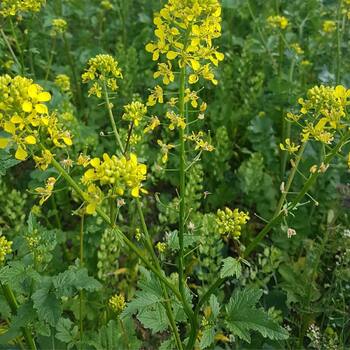In the UK we have lost 97 per cent of our meadows since the Second World War, so planting garden meadows – a combination of wildflowers and wild grasses – can help to make up for these lost habitats and provide food and shelter for a huge range of species.

Adding native wildflowers into a small area of your garden will provide more food for pollinators like bees, hoverflies, moths and butterflies, as well as other insects. The more wildflowers you plant, the greater your impact will be on your local pollinators.

You can grow wildflowers in any space, from a window box or plant pot on a balcony to larger community green areas such as schools, playing fields, parks and verges.
Do you hate mowing your lawn? Consider replacing some or all of your regularly mown lawn with a mixed wildflower display, increasing biodiversity in the garden and reducing the need to mow regularly.
At home in the garden, wildflowers can be sown in place of a lawn, in an area set aside for wildflowers, raised beds, borders or pots. Try to ensure the flowers are sown in an open and sunny area and grown in unproductive, low nutrient soil to prevent the delicate wildflowers from being out-competed by more vigorous plants and grasses. If the only space available to grow your wildflowers is shaded then it is important to chose a wildflower mix especially formulated for shade or woodland areas to prevent disappointing results.

How to.
- Pick your site and prepare your area for seed sowing. The larger the area the better but any size patch will make a difference. Clear the ground of weeds and grasses and rake the soil into a fairly fine tilth, removing large stones.
- Reduce the fertility of your soil. If the area chosen has been treated with fertilisers or manure then the top 3-6 inches may contain too many nutrients to successfully grow wildflowers. Fertility can be reduced by physically removing the top layer of soil from the area or by planting a nutrient hungry crop such as mustard for the first year to reduce fertility as they grow.

- Pick your wildflower seed mix. It is important to make sure you pick the right kind of wildflower mix to suit the conditions that they will be grown. Here at Love Plants we hold a selection of seed mixes to suit all tastes and conditions so that you get the absolute best results from your wildflower patch. We even sell a special Coronation mix in shades of red, white and blue to commemorate the coronation of His Majesty King Charles III!

- Consider adding Yellow Rattle seed to your wildflower patch, especially if growing in areas where more vigorous grasses may take over and dominate. Yellow Rattle is a semi-parasitic plant that gains its nutrients from the roots of nearby grasses. Growing Yellow Rattle will help keep grasses under control allowing your more delicate wildflowers to grow and thrive with less competition.
- Mix your seed with silver sand or compost to make it easier to spread the seed evenly and sow over the prepared soil. Aim for approximately five grams of seed per square metre for good coverage.
- Rake over the surface to ensure the seed makes contact with the soil. Wildflower seeds need sunlight to germinate so there is no need to cover the seed with soil.
- Water gently and continue to keep watered until flowers have established.
- Sit back, wait for your meadow to grow and enjoy watching your patch come alive with bees, butterflies, birds and bats!

- Aftercare of your wildflower patch will depend upon which species mix you have sown and whether you have sown an annual or perennial mix. Avoid mowing between April and the end of August/beginning of September. This allows most flowers to have set seed in readiness for the next growing season.


